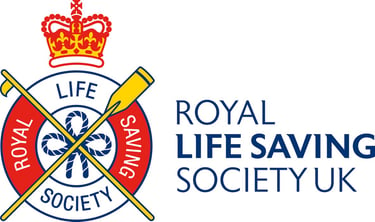Mastering the Art of Treading Water:
A Comprehensive Guide for Adults
Learning to tread water is a valuable skill that not only enhances water safety but also boosts your overall confidence in aquatic environments. Whether you're a beginner or looking to refine your technique, this comprehensive guide is tailored for adults with realistic expectations.
Understanding the Basics:
1. Water Comfort:
- Begin by getting comfortable in the water. Spend time in shallow areas, gradually progressing to deeper sections as you gain confidence.
2. Breath Control:
- Practice controlled breathing. Inhale deeply and exhale slowly, maintaining a steady rhythm to avoid unnecessary fatigue.
3. Body Positioning:
- Focus on maintaining a horizontal body position. Keep your body straight and upright, with your head comfortably above the water.
4. Leg Movement:
- Initiate a gentle scissor kick or a flutter kick to help you stay afloat. Experiment with different leg movements to find what feels most natural.
Building Treading Water Skills:
5. Eggbeater Kick Technique:
- Learn the eggbeater kick, a technique widely used for treading water. Practice this alternating circular motion with your legs, allowing for efficient and controlled movement.
6. Arm Movements:
- Experiment with different arm movements. Some individuals find a circular motion with the arms, while others prefer a sculling action. Find a rhythm that complements your leg movements.
7. Buoyancy Awareness:
- Understand your body's buoyancy. Utilise your lung capacity to control your position in the water. Deep breaths enhance buoyancy, assisting in the treading process.
8. Conserving Energy:
- Treading water efficiently involves conserving energy. Find a balance between leg and arm movements to minimise exertion while maintaining stability.
Practical Exercises:
9. Deep Water Practice:
- Move to deeper water gradually. Practice treading water in an area where you cannot touch the bottom, forcing you to rely on your newly acquired skills.
10. Extended Treading Sessions:
- Increase your treading time gradually. Begin with short intervals and gradually extend the duration as your comfort and stamina improve.
11. Challenges and Variations:
- Introduce challenges, such as treading water with your hands out of the water or incorporating various kicks. These variations enhance your overall skill set.
Realistic Expectations and Persistence:
12. Patience and Persistence:
- Recognise that mastering treading water is a gradual process. Be patient with yourself and celebrate small victories along the way.
13. Consistent Practice:
- Consistency is key. Regular practice, even in short sessions, contributes significantly to skill development and increased confidence.
14. Seeking Guidance:
- Consider seeking guidance from a qualified swimming instructor. Professional guidance can provide personalised tips and corrections tailored to your specific needs.
Safety Precautions:
15. Supervised Practice:
- Whenever possible, practice treading water under the supervision of a lifeguard or a competent swimming partner.
16. Water Safety Knowledge:
- Enhance your overall water safety knowledge. Understand currents, conditions, and how to signal for help in case of an emergency.
Remember, learning to tread water is a skill that improves with time, practice, and patience. By incorporating these tips into your routine and maintaining a positive mindset, you'll steadily gain confidence and proficiency in this fundamental aquatic skill.


